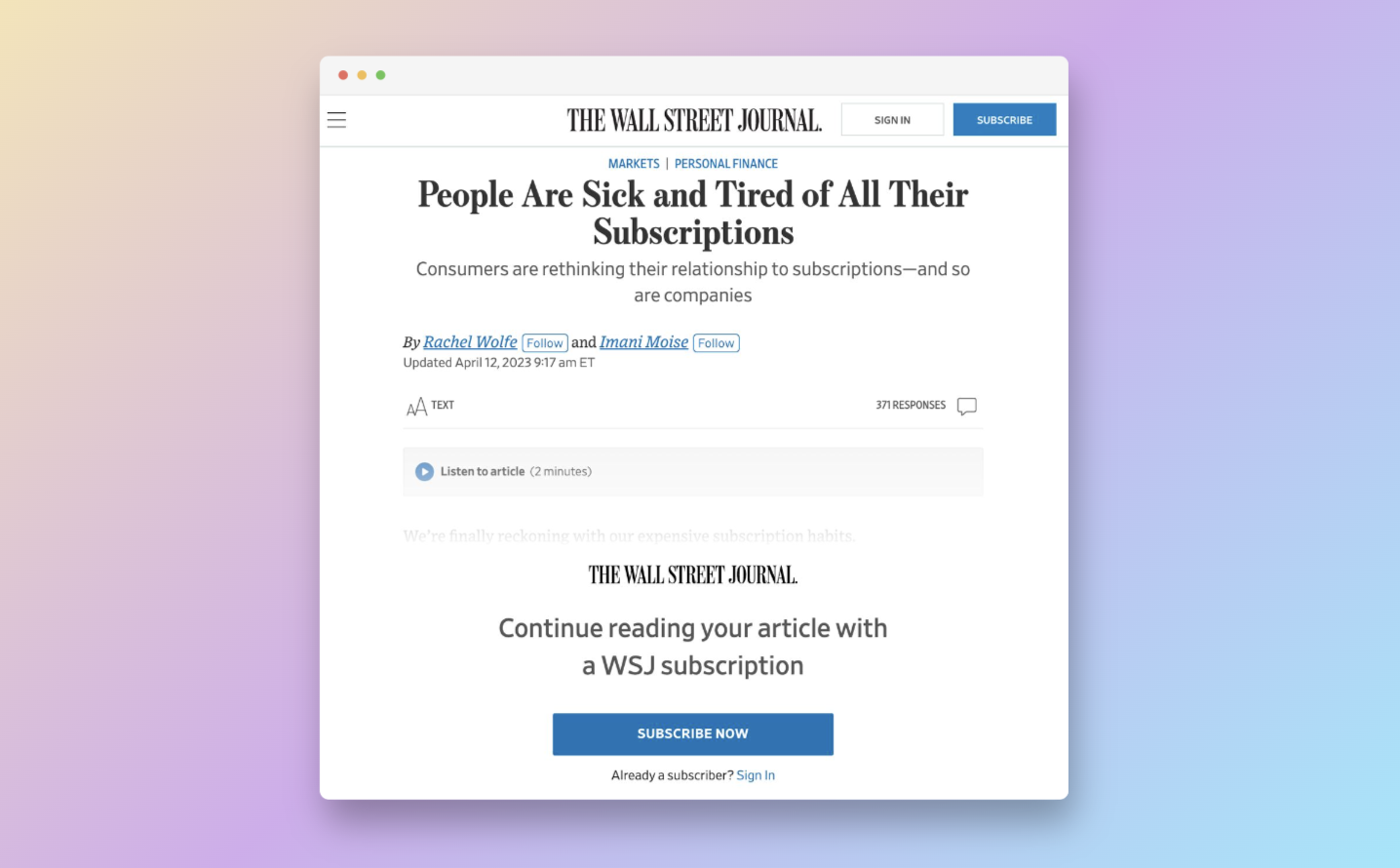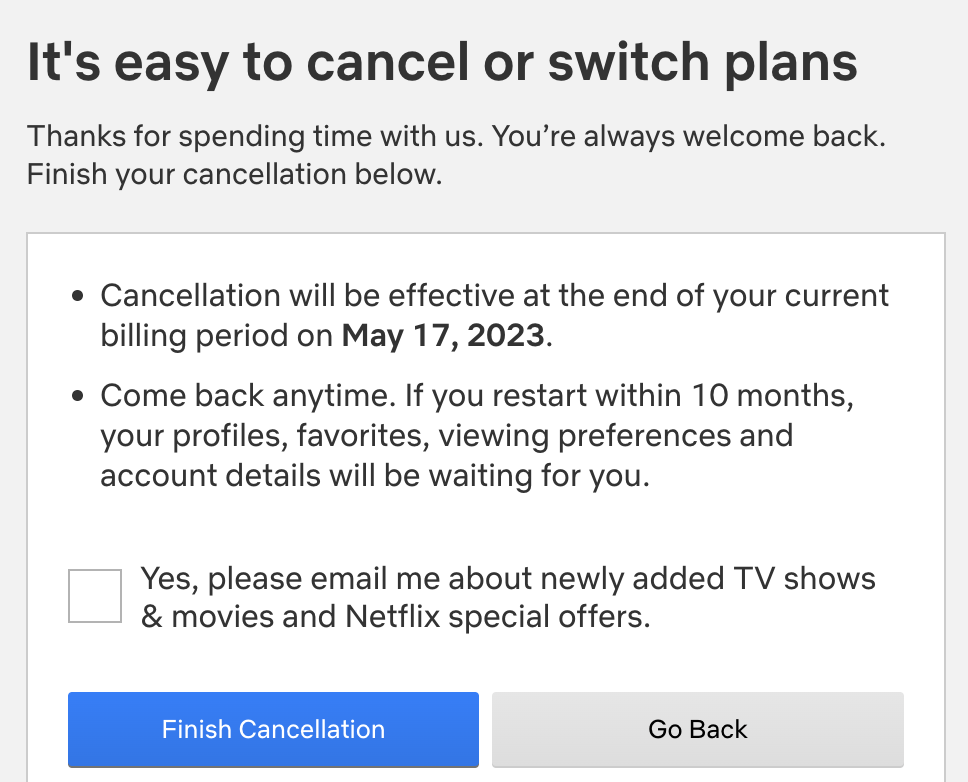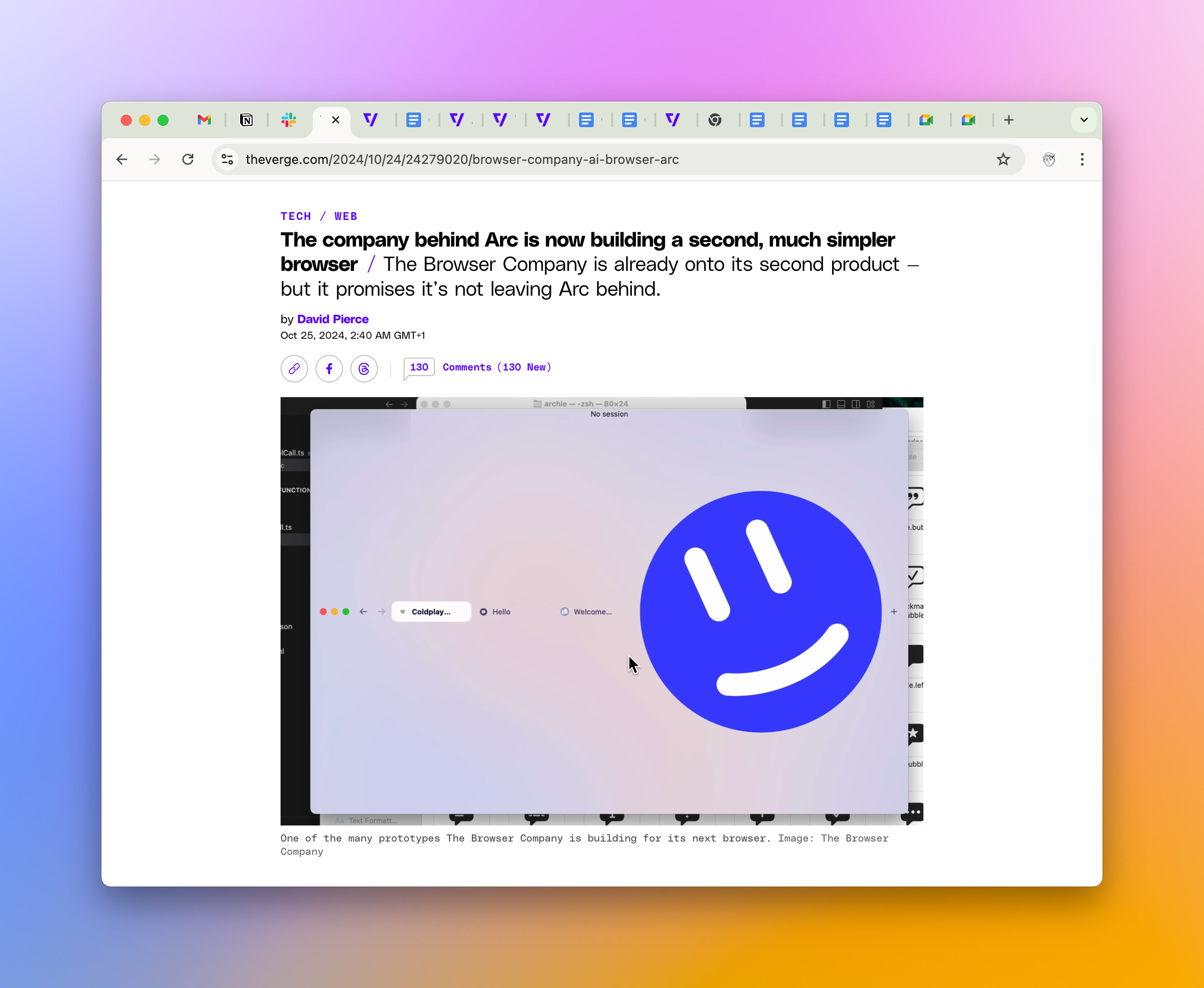Why Micropayments Don’t Work And People Hate Paywalls
Customers want micropayments but they’re a bad option for news organizations. What they should do instead is provide us with better paywalls.

Hating on media paywalls is very common. Whenever you see a paywalled article shared on Twitter, you can see people asking what’s inside and if there’s a way to access it.
One solution many people propose is micropayments. This implies being able to pay a relatively small fixed amount to access a single news story without subscribing. This is what Elon wants to implement at Twitter.
Rolling out next month, this platform will allow media publishers to charge users on a per article basis with one click.
— Elon Musk (@elonmusk) April 29, 2023
This enables users who would not sign up for a monthly subscription to pay a higher per article price for when they want to read an occasional article.…
Ben Thompson has a good explainer on why this wouldn’t work in the latest episode of Sharp Tech. The key reason is that while this might sound enticing for consumers (we’ll get back to this later), it’s technically impractical and terrible for businesses.
First, micropayments simply don’t make sense for publications. They can’t afford to acquire customers each and every time. They’ve invested in their teams and facilities. There are no marginal costs in a single article, but it’s also not an .mp3 file you could be selling for decades. Even the most successful publications, like The New York Times, aren’t terribly profitable (NYT had a profit margin of 15% in 2022)l. Most others fare much worse. So they’d much rather have a predictable recurring revenue instead of trying to entice customers to pay every time.
Second, card transactions are expensive. In the US, you’d pay at least $0.29 + 3% (most likely more). So if you want to sell one article for $1, over 30% would evaporate. And this is before we start talking about Apple’s 30% if you’re selling on iOS. There are ways around this. Twitch has tipping, so you buy a bunch of internal “tokens” in advance and then use them to award creators. This way, you only pay the credit card fees once. But you need a central actor to run this, and Twitter could have been such a platform, considering its role in the news ecosystem. Well, in its previous life, until Elon burned all the bridges and started replying to press requests with a poop emoji.
But now we’re getting back to the first point – news orgs (and everyone else) don’t actually benefit from micropayments. Twitter can build it, but I’m not sure who’d use it. It’s not just incremental revenue – it’s also lost recurring revenue from all those subscribers who’d subscribe if they couldn’t access the content another way. If you don’t want to subscribe, you aren’t the target customer.
One could argue that putting all your content behind a hard paywall could lead to a declining reputation since fewer people can read it (and be influenced). There are all sorts of factors here. This is a complex question, so let’s leave it for another day.
It’s impractical to expect people to subscribe to all news media. Well, I have to, because I work in PR, but I’m an outlier. But everyone has been saying the same about video streaming. The average person subscribes to 2.8 streaming services. You heard about that show on Disney+, so you subscribe for Disney+, and then you cancel it later.
Why won’t we do it with news websites?
Ok, there is no “Buy for $5” button, but if you really want to read it, why not subscribe for one month?
I think part of the reason is that people don’t actually trust their paywalls and subscription management. Netflix is the gold standard of subscriptions.
Look at its paywall. Clean, simple, no weird trials, no pricing change after the first month/year.

When you do subscribe, they send you an email before the next charge to remind you about it. Feel free to cancel in advance. And if you want to, it’s very straightforward.

With news media there are two key problems that I see over and over go: unclear pricing and a difficult cancelation process.
Now we’re slowly getting out of the terrible age when the only way of canceling your The New York Times subscription was to call someone. It maybe took FTC to get them them. But most news website have finally agreed you should be able to cancel your subscription online. Still, there’s still an expectation among consumers that you can’t. And with The Wall Street Journal it’s actually still the case (unless you’re covered by a local law). You don’t do this when you know you’re delivering value to you customers. You do this when you hope they don’t notice the charges for two years.
 Then you have the “paywalls” themselves. Marketers at these companies try very hard to get you in and then start charging the full price afterward. The paywalls are designed to trick you.
Then you have the “paywalls” themselves. Marketers at these companies try very hard to get you in and then start charging the full price afterward. The paywalls are designed to trick you.
Here’s Insider.

And here’s Financial Times.

You’d think having small grey font is something more akin to a sleazy insurance policy and not an news org you should trust, but here we are.
Just give us straightforward pricing and promise it’s easy to cancel online. I subscribe to The Information, and even though the subscription is expensive, the decision was easy, because I expect everything to be smooth and simple.
If you already paid for the first month, there’s a clear incentive to try using it while you can. The same you’d do with Netflix, Hulu or another streaming that shouldn’t have been started in the first place. And then, maybe, you realize you’re getting value and don’t want to lose it. Plus, nobody is subscribing to a news website to binge old news in one month just to cancel it right away.




